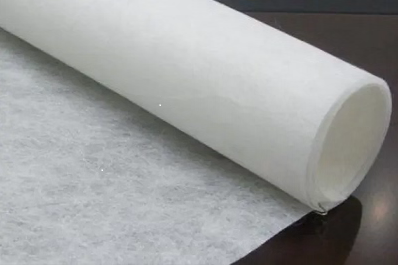Because of the new crown epidemic, non-woven fabrics have attracted more and more people's attention. Are you often confused by all kinds of non-woven fabrics? The non-woven fabrics we often hear about are PP, PLA and PET non-woven fabrics. These non-woven fabrics are produced by different nonwoven machinery and have different technological processes. Please check the difference of non-woven fabrics from the following aspects.

I. Raw material difference
PP : Polypropylene, It is a non-toxic, odorless, tasteless milky white high crystalline polymer with a density of only 0. 90--"0. 91g/cm3, which is one of the lightest varieties of all plastics.
PET:Polyethylene terephthalate. It is a milky white or light yellow highly crystalline polymer with a smooth and shiny surface. Creep resistance, fatigue resistance, abrasion resistance and dimensional stability, low wear and high hardness, with the greatest toughness among thermoplastics: good electrical insulation performance, less affected by temperature.
PLA: Polylactic acid. It is a new type of biodegradable material made from starch raw materials proposed by renewable plant resources such as corn. The starch raw material is saccharified to obtain glucose, and then fermented from glucose and certain strains to produce high-purity lactic acid, and then chemical synthesis method is used to synthesize polylactic acid with a certain molecular weight. It has good biodegradability, and can be completely degraded by microorganisms in nature after use, and finally generates carbon dioxide and water, which does not pollute the environment, which is very beneficial to protect the environment and is recognized as an environmentally friendly material.
II. Fabric Characteristic difference
PP non woven fabric:
1) Sensitive to UV rays
2) High crystallinity and regular structure, so it has excellent mechanical properties. And has high strength, hardness and elasticity.
3) It has good heat resistance, the melting point is 164~170℃, and the products can be sterilized at temperatures above 100℃. Under the action of no external force, it will not deform at 150 °C
4) PP non-woven fabric has good chemical stability, in addition to being eroded by acid, it is relatively stable to various other chemical agents
5) The non-woven fabric has excellent high-frequency insulating properties, and since it hardly absorbs water, the insulating properties are not affected by humidity
PET non woven fabric:
1)The high temperature resistance of PET is about 290 degrees, and PET is more resistant to high temperature than PP.
2) In the same wide , the PET shrinks less, so it is less waste.
3)Under the same gram weight, PET has greater tensile force, tension and bearing capacity than PP. 65 grams of PET is equivalent to the pulling force, tension and bearing capacity of 80 grams of PP.
4)From the perspective of environmental protection, PP is doped with PP waste, and PET is all new polyester chips. PET is more environmentally friendly and hygienic than PP.
PLA non woven fabric:
1)Degradable
2) Environmental protection and no pollution
3)Soft and skin-friendly
4)The surface of the cloth is smooth without crumbs, and the uniformity is good
5)Good ventilation performance
6)Good water absorption performance
III. Applicable fields
● Medical and sanitary cloths: surgical gowns, protective clothing, sterile wraps, masks, diapers, women's sanitary napkins, etc.;
● Home decoration fabrics: wall coverings, tablecloths, bed sheets, bedspreads, etc.;
● Cloth for heels: lining, adhesive lining, flakes, styling cotton, various synthetic leather base fabrics, etc.;
● Industrial cloth: filter material, insulating material, cement packaging bag, geotextile, covering cloth, etc.;
● Agricultural cloth: crop protection cloth, seedling raising cloth, irrigation cloth, thermal insulation curtain, etc.;
● Others: space cotton, thermal insulation materials, linoleum, cigarette filters, tea bags, etc.
Non-woven fabrics have very broad application and development prospects. SUNTECH could provide high quality PP, PLA, PET non woven machine.




